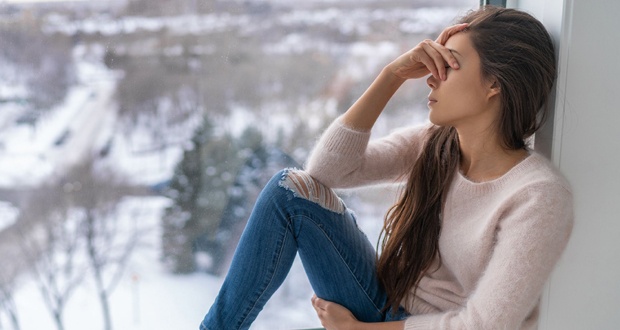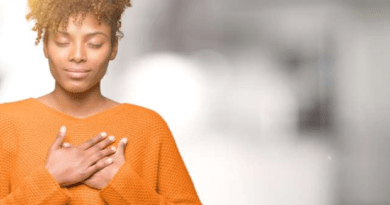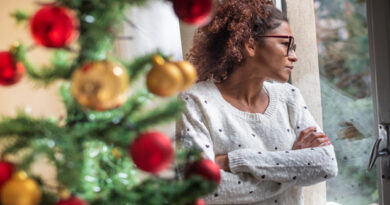Understanding Seasonal Affective Disorder
During different seasons in people’s lives, they may experience periods of sadness or not feeling like their usual selves. Someone who shows significant changes in their mood during the winter season may have something known as Seasonal Affective Disorder (SAD), which is a form of depression. In most cases, SAD begins in the fall or winter and remains until the days are brighter and warmer when spring comes around. SAD can also occur in the springtime, although this is a less common form. According to Mental Health America, each year about 5% of the U.S. population experiences seasonal depression. SAD is considered a type of depression and not a separate disorder, because of the similar characteristics.
The specific causes of SAD remain unknown. However, several factors may contribute to it. The reduced level of sunlight may affect an individual’s serotonin level. This can impact a person’s mood, as lower levels of serotonin are linked to depression. A sleep-related hormone, melatonin, has also been linked to SAD. When it is dark, the body naturally produces more melatonin. The shorter and darker days can show an increase in an individual’s melatonin level. Melatonin can also affect an individual’s circadian rhythm, which can impact the usual sleep/wake rhythm of an individual. These causes can be associated with the symptoms of SAD.
Risk factors
SAD is more common in women than in men. The main onset occurs between 20 and 30 years of age. A few other risk factors may include family history, having depression, low levels of Vitamin D, and living further from the equator. Having these risk factors does not mean an individual has SAD, however it is important to be aware.
Bipolar disorder is another risk factor for SAD. When the seasons change, there may be a link between the change and mania. During the spring and summer, some people can have increased symptoms of mania or a less intense form of mania (hypomania), anxiety, agitation, and irritability. During the fall and winter times they may experience depression.
General symptoms
- Fatigue, low energy level, and/ or oversleeping
- Feeling listless, sad, or down most of the day, or nearly every day
- Losing interest in activities once enjoyed
- Having difficulty concentrating
- Sleeping too much or having trouble sleeping
- Appetite changes
- Agitation, anxiety, and/or irritability
- Overeating and weight gain
- Having suicidal thoughts
There are steps you can take to help prevent or reduce the symptoms if the changing seasons impacts you. Practicing self-care all year long may help reduce the risk of SAD. Even taking small steps like going outside on sunny days whether it is cold or hot may help reduce symptoms. Additionally, getting regular exercise, eating a healthy diet, and maintaining healthy sleep habits with predictable sleep/wake cycles may prevent SAD.
Treatment
The good news is that there are several effective treatments for those who may be suffering from SAD. Spending time outdoors and having exposure to sunlight can help relieve symptoms. If getting sunlight outdoors is not possible, try light therapy. Light therapy includes being exposed to a special light for a specific amount of time each day to simulate the light you would experience outside. Also, psychotherapy can help to improve view of self, interpersonal relationship skills, identify stressors, and how to manage them.
When to seek professional help
If you think seasonal depression is something that affects you, please seek professional help to find the best treatment for you. It is normal to have days when you feel down. However, if you start to notice the symptoms of SAD (trouble sleeping, appetite change, loss of interest, suicidal thoughts), please seek professional help before getting overwhelmed by the symptoms.
– By Anabel Feauto, Health Promotion Specialist
Valeo’s Crisis Center is located at 400 SW Oakley Avenue. Valeo’s Crisis Center never closes, it is a walk-in emergency clinic with no appointment necessary. Valeo’s 24-Hour Crisis Line is 785-234-3300
READ: Ending Mental Health Stigma
Valeo Behavioral Health Care
785-233-1730
Crisis Services
400 SW Oakley, Topeka, KS 66606
24 Hour Crisis Line: 785-234-3300
National Suicide Prevention Life Line
1-800-273-8255
Shawnee County Suicide Prevention Coalition
Family Service and Guidance Center (18 and under)
325 SW Frazier, Topeka, KS 66606
24 Hour Crisis Number: 785-232-5005
Healing after Loss to Suicide Group (HeALS)
Sandy Reams – Group Facilitator
Topeka.Heals@gmail.com
785-249-3792





